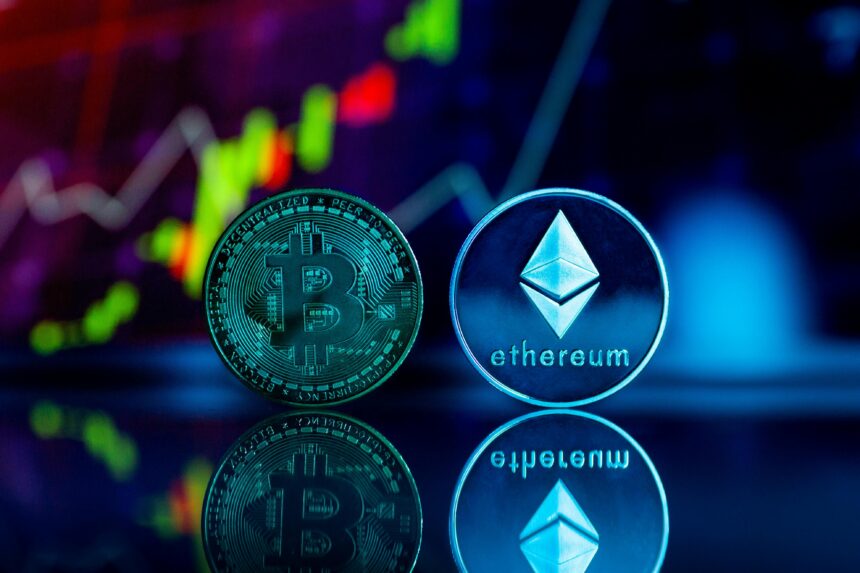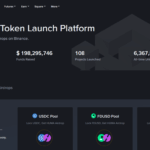In this article, I will explore the lesser known high speed blockchains which are hidden gems in faster transactions and efficient scalability for fast paced crypto world.
Their advertisement won’t grab headlines, but these innovative platforms are using cutting-edge technology and relaxing fee structures. If your goals are speed and high potential, these blockchains should be on your radar.
Key Points & Best High-Speed Blockchains You’ve Never Heard
| Blockchain | Key Points |
|---|---|
| HeLa | Ultra-fast consensus with sub-second finality, optimized for Web3 scalability. |
| Solana | High throughput (65,000 TPS), low latency, ideal for DeFi and NFT ecosystems. |
| TON (The Open Network) | Built for speed and scalability, designed by Telegram with dynamic sharding. |
| Sui | Parallel transaction execution, low-latency performance, designed for gaming. |
| Fantom | Uses DAG-based Lachesis protocol, offering near-instant finality and low fees. |
| Hedera Hashgraph | Unique hashgraph consensus, 10,000+ TPS, fast and energy-efficient. |
| Avalanche | Sub-second finality, modular architecture with multiple custom blockchains. |
| TRON | High throughput, popular for stablecoin transfers and DApps. |
| Kaspa | BlockDAG structure enables fast block times (1s) and massive scalability. |
| SEI | Optimized for trading apps, parallel order execution, blazing-fast performance. |
10 Best High-Speed Blockchains You’ve Never Heard
1.HeLa
HeLa is a new blockchain poised to offer strikingly fast consensus and near-instant transaction finality. It focuses on scalability to close the gap between dApps and high throughput.
With its hybrid consensus mechanism, HeLa sustains a level of decentralization and efficiency necessary for next-gen Web3 applications.
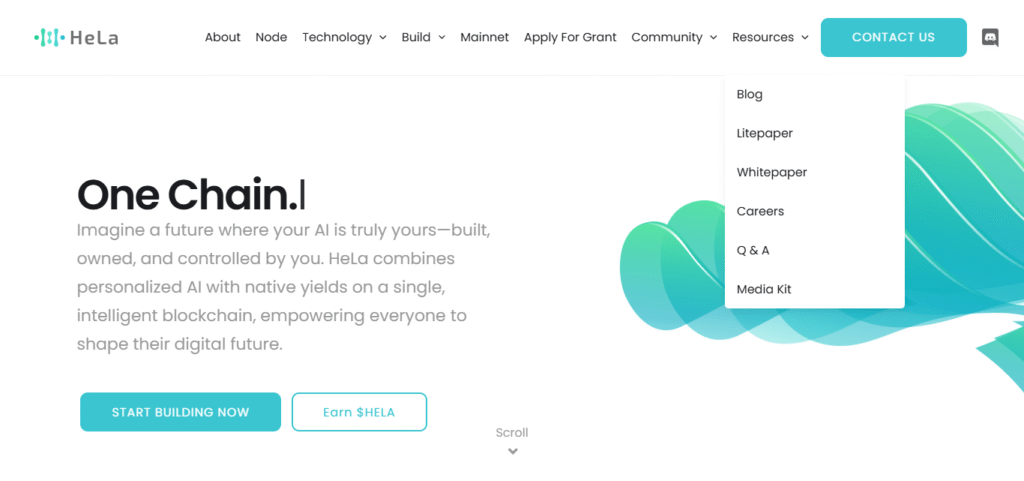
Specially tuned for low latency transactional environments, HeLa enables speed and low-cost operations, making it ideal for DeFi platforms and gaming. Its novel approach to network scalability means HeLa can maintain security while processing thousands of transactions annually.
Features HeLa
Ultra-Fast Consensus: Achieved within sub-seconds, offers rapid transaction processing.
Scalability: Performance remains consistent when demand increases.
Web3 Focused: Offers seamless user experience for decentralized applications.
Low Fees: Microtransactions can be accomplished thanks to minimal transaction fees.
Hybrid Consensus: Strikes a balance for speed and decentralization with the use of numerous mechanisms
2.Solana
Solana is one of the most renowned new blockchains; it offers the ability to process in excess of 65,000 transactions per second (TPS) at a fraction of the cost and lag time compared to others.
Its differentiating proof-of-history (PoH) consensus gives Solana the capability to achieve higher throughput while sustaining the level of decentralization necessary for dApps, DeFi, and NFTs.
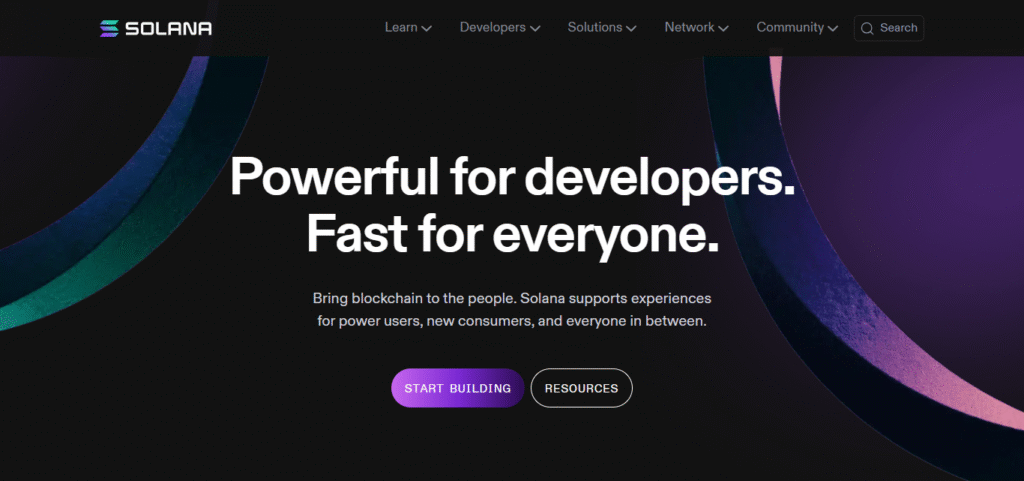
Solana has already done an incredible amount of work in accelerating the expansion of possibilities within blockchain technology; bolstering transaction finality, and reducing costs to near-zero.
Features Solana
Proof of History (PoH): Is a special consensus approach that stamps transactions which improves speed and lessens congestion.
Superb Output: One of the fastest block chains in existenceat over 65,000 transactions per second (TPS) processing capability.
Inexpensive Transaction Fees: Solaná’s effectiveness translates into low-cost transactions which can be as low as a fraction of cent.
Expanding Potential: Supports in performance dApps and smart contracts without undermining the underlying system.
3.TON (The Open Network)
TON, abbreviated as The Open Network, is a TELERAM-initiated scalable blockchain envisioned to enable decentralized applications, payments, and ancillary digital services.
With its dynamic sharding architecture, TON aims for infinite scaling with low-cost transactions and fast execution.
Its consensus mechanism, proof of stake (PoS), permits participatory decentralization and security while maintaining efficiency.
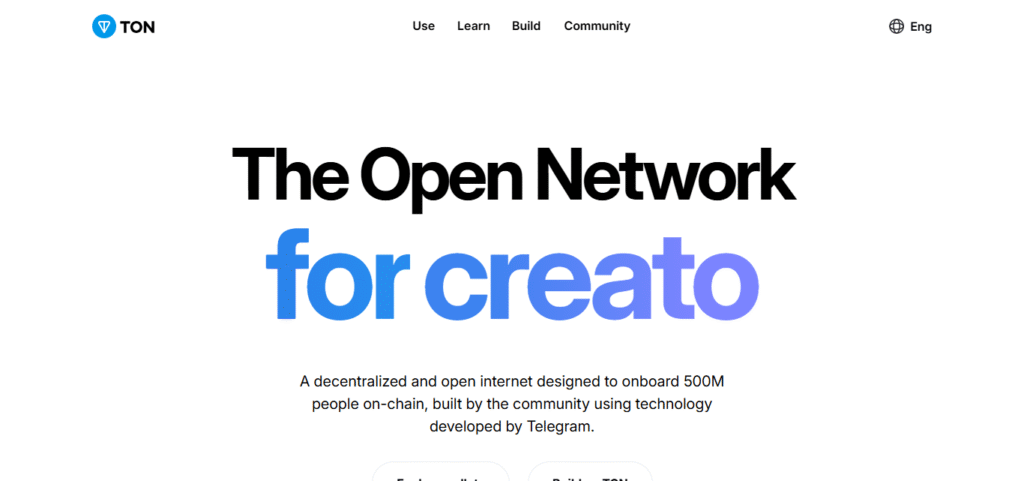
With the capable design of THON, thousands of transactions can be processed per second enhancing its competition for speed-demanding applications like micropayments and real-time services.
Due to its integration with Telegram’s massive user base, it is poised to become a future-leading blockchain.
Features TON (The Open Network)
Dynamic Sharding: Offers ever-expanding scalable architecture.
Low Transaction Costs: Ideal for micropayments or users who frequently transact.
High Throughput: Supports the capacity of thousands of transactions simultaneously.
Proof of Stake (PoS): Decentralization is encouraged due to how efficient and secure the consensus is.
Telegram Integration: Light Telegram integration ensures greater chances of reaching vast audiences.
4.Sui
Sui is classified as a high-performing blockchain solely designed to serve the gaming and digital assets ecosystems in a decentralized form. Its unique parallel transaction execution allows processing of a large number of transactions concurrently which enhances scalability.
This structure enables Sui to serve real-time applications like gaming, NFTs, and DeFi in a lag-free manner. Defining features include low latency performance and seamless user experience.
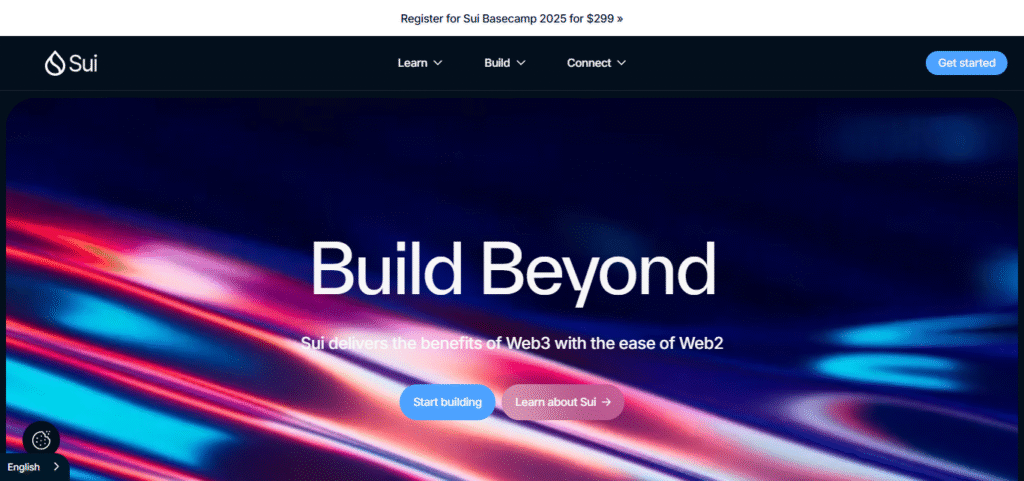
By employing a novel data model that utilizes native object management, Sui enhances resource optimization and bottle neck reduction making it one of the fastest and efficient blockchains.
Features Sui
Parallel Transaction Execution: Accomplished with an increase in throughput as transactions can be processed together.
Low-Latency Performance: Exceptional for online gaming and real-time services due to instantaneous transaction finality.
Efficient Object Management: Data access and storage are faster and more secure owing to the native object model.
Scalability: Purposefully created to have no limits in scaling, with millions of transactions possible simultaneously.
Developer-Focused: Tailored for dApps and digital asset markets.
5.Fantom
Fantom’s go from DeFi scaling challenges to almost effortless. Considering the unique approach to smart contracts on its DAG-based blockchain architecture which supports hundreds of transactions per second, needs no waiting and delivers lasting results within a split second.
Fantom’s asynchronous Lachesis protocol also works around the clock, processing multiple transactions at once reducing processing time and increasing network scalability.

With transaction costs remaining extremely low, the platform becomes even more appealing to developers and businesses in need of advanced blockchain solutions.
Fantom allows for phenomenal growth while placing outstanding emphasis on decentralization like speed.
Features Fantom
Lachesis Protocol: A DAG-based consensus that enables near-instant finality and scalable throughput.
High Throughput: Processes and executes thousands of transactions per second.
Low fees: Transactions carried out will incur minimal fees and low costs.
Decentralized: A strong and secure decentralized system that ensures transparency and control.
Ecosystem Growth: Expanding ecosystem that sustains DeFi along with NFTs and smart contracts.
6.Hedera Hashgraph
Hedera Hashgraph is yet another attempt to beat Ethereum when it comes to smart contract blockchain frameworks.
Implemented with the proof-of-stake consensus algorithm, maintained energy-efficient decentralization, Hashgraph creates incredible speed with security, allowing over 10, 000 transactions per second.

In comparison to Ethereum’s smart contracts, Hedera offers exceptional low-latency, real-time, irreversible finality coupled with tokenization.
The attention lent to speed and security becomes useful for companies looking for affordable public ledgers while relying on a steadfast and swift service to monitor the expenditures executed as transaction fees.
Features Hedera Hashgraph
Hashgraph Consensus: Provides high throughput and swift transactions with a unique consensus model.
10,000+ TPS: Highly scalable with the ability to execute over 10,000 transactions per second.
Minimal delay to confirm transactions: Finalizing transactions is instant without any considerable delay.
Environmentally friendly: Operations are eco-friendly because of the Proof-of-Stake framework.
Security and Fairness: Security and utmost fairness are conveyed with Byzantine fault tolerance.
7.Avalanche
Avalanche is known for having one of the fastest blockchains as it focuses heavily on scalability, low-latency transaction speeds, and interoperability. It utilizes a consensus protocol called Avalanche-X which allows the platform to achieve sub-second finality and supports thousands of transactions every second.
The platform has a modular structure enabling developers to build their own customized blockchains, also known as subnets.
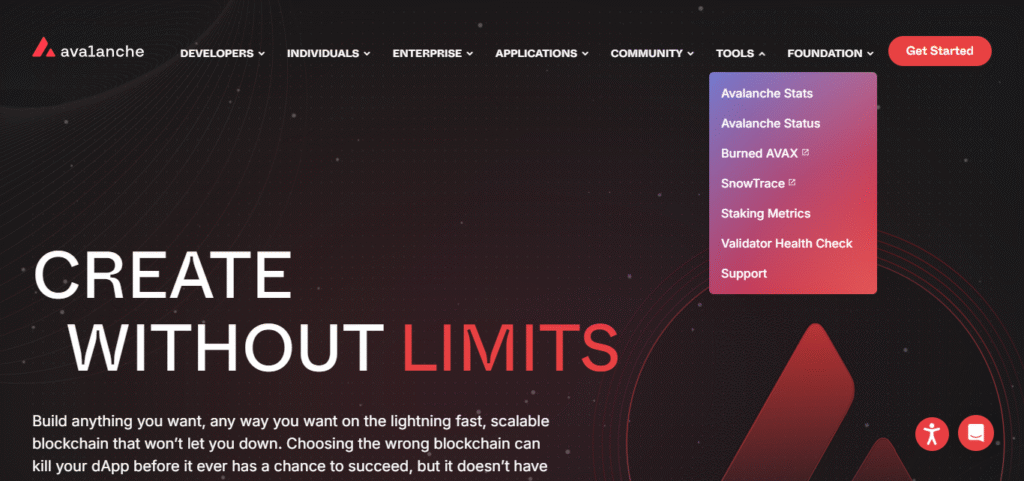
Avalanche is a well-suited platform for decentralized finance applications as it provides high scalability with low fees while still being secure and decentralized. Its growing ecosystem is being built to attract new projects looking for flexible and fast blockchain solutions.
Features Avalanche
Sub-second finality: Transactions are confirmed in less than a second.
Modular architecture: Accomplish specific objectives with an unlimited number of customizable blockchains (subnets).
High scalability: Support and execute thousands of transactions per second while minimizing delays.
Interoperability: Works alongside other blockchain and integrates smoothly into different networks.- DeFi and Smart Contracts: Developed with the intention of enabling smart contracts, NFTs, and DeFi applications.
8.TRON
TRON is known for their high-performance entertainment and media focused blockchain. The platform was created to serve any and all decentralized applications (dApps).
In terms of speed and scalability, TRON focuses on those two the hardest as it offers low-cost transactions and can execute smart contracts at an extreme volume.
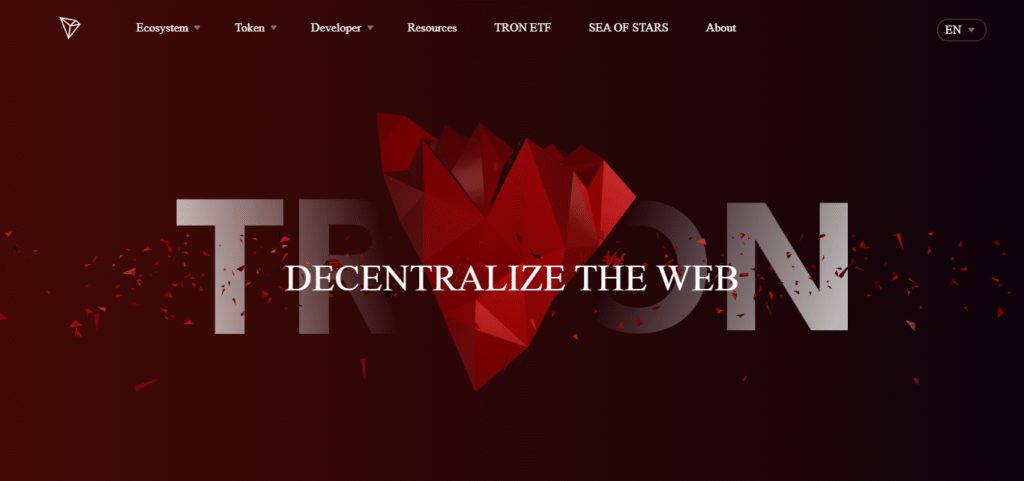
It can process thousands of transactions, making it ideal for content sharing or financial gaming applications.
With TRON’s Delegated Proof-of-Stake (DPoS) consensus, fast block times are ensured alongside energy efficiency. Its minimal cost when handling large scale dApps has made TRON one of the most sought out platforms for enterprises and developers.
Features TRON
Delegated Proof-of-Stake (DPoS): Enables efficient block generation with low latency.
High Throughput: Capable of processing thousands of transactions in a single second.
Low Transaction Fees: Affordable costs for both users and developers.
Smart contracts and dApps: Wide variety of decentralized applications are supported.
Global Reach: Large ecosystem of applications emphasizing content sharing and entertainment.
9.Kaspa
Kaspa is the world´s first blockchain with a blockDAG (Directed Acyclic Graph) structure which allows for fast block creation and confirmation.
It therefore achieves transaction finality as fast as one second. Kaspa processes transactions using a highly parallelized consensus mechanism which allows simultaneous transaction processing.

This makes Kaspa far more scalable compared to traditional blockchains. The vast number of transactions per second the network can handle makes it suitable for real-time use, such as payments and gaming. Decentralized, rapid, and scalable, Kaspa is a fast growing ecosystem for developers and users.
Features Kaspa
BlockDAG Architecture: Increased parallelization results in faster block generation and processing.
1-Second Block Time: Instantaneous block confirmation and fast transaction finality.
High Scalability: Increased number of transactions can be supported without hindrance.
Decentralization: Network architecture guarantees security and decentralization.
Efficient Consensus: Real-time applications, including payments and gaming, are best supported.
10.SEI
SEI is a performance oriented execution low-latency blockchain specifically built for trading applications. High frequency trading, parallel order execution, and low transaction delay are the cruxes of its architecture.
Real time settlement of financial transactions is enabled by SEI’s consensus mechanism which ensures fast and secure settling.

The efficient structure of the blockchain allows handling high-volume trading and on-chain operations without compromising speed.
Developers aiming to build next generation trading platforms requiring real-time low transaction processing will find SEI ideal.
Its scalability without performance sacrifice makes it a robust platform for decentralized trading and finance (DeFi) ecosystems.
Features SEI
Optimized for Trading: Specifically designed for rapid transaction and high-frequency trading.
Parallel Order Execution: Enables multiple orders to be filled simultaneously for quicker execution.
Low-latency Performance: Ultimate near-instant transaction finality required by trading applications.
Scalable: Built for high-volume trading environments.
DeFi Integration: Enables decentralized finance and other trading applications.
Conclusion
To wrap it up, While they may not be as popular yet, these high-speed blockchains are changing the landscape of cryptocurrency.
These speed demons offer low fees, noteworthy throughput, and unique innovations which makes them appealing to developers and investors alike.
If you monitor these “under-the-radar” players, you could gain an advantage in the upcoming merging of technology and blockchain.


